Welcome to our comprehensive guide to SaaS benchmarks. This article seeks to enlighten you on how these benchmarks are crucial to measuring your performance and propelling your business toward success. We’ll explore both external and internal benchmarks, and we’ll discuss how they should align with your core business objectives.
We cover a range of metrics, such as customer acquisition, retention, financial health, operational efficiency, and capital efficiency. Keep an eye out for strategies on how to excel at these benchmarks, overcome challenges, and effectively use analytics and reporting tools.
SaaS Benchmarks [Key Takeaways]
Benchmarks are pivotal in measuring performance and achieving success in SaaS businesses. They provide:
- A way to set and track realistic goals
- An emphasis on improving operational efficiency
- Auditing avenues for financial performance metrics
- The ability to handle tweaked strategies for effective lead generation and customer acquisition
Recognizing the right benchmarks can streamline processes, fortify your go-to-market strategy, and ensure cost reduction while fostering revenue growth. However, overcoming benchmarking challenges is equally imperative for accurate data analysis and reporting.
Understanding SaaS Benchmarks
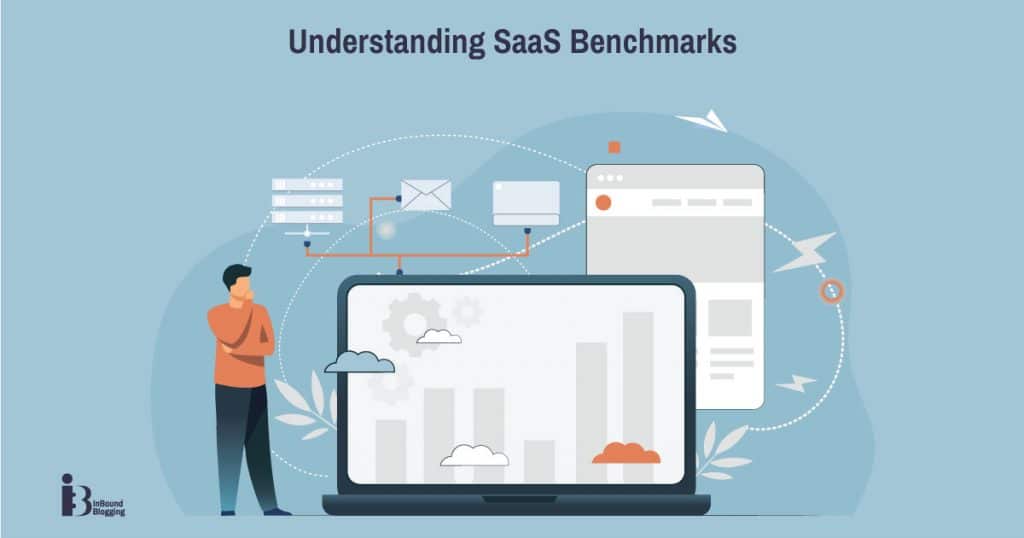
Understanding SaaS benchmarks is crucial for measuring performance and achieving success. These are industry standards that help with setting realistic goals, assessing your business model, and prioritizing your business operations effectively.
Definition and significance of SaaS benchmarks
SaaS benchmarks are performance measurement tools that gauge the health and effectiveness of a SaaS business. Their significance lies in how they provide actionable insights into various aspects of the business. They aid in goal-setting, identifying improvement areas, and aligning efforts with the overall business model and priorities, making them crucial for success and achievement.
The role of industry standards in measuring performance
Industry standards serve as key SaaS benchmarks for gauging your company’s performance against other businesses in the sector. Whether you’re assessing customer acquisition metrics, operational efficiency, or financial performance, these standards provide an invaluable yardstick for improvement.
For example:
- A low churn rate signifies healthy user retention
- High revenue growth indicates a successful go-to-market strategy
Understanding these measures and how your SaaS business stacks up allows for strategic decision-making based on concrete data.
Essential SaaS benchmarks
Businesses evaluate their success through SaaS KPI benchmarks incorporating multiple key performance indicators to provide comprehensive insights.
Let’s explore some common SaaS industry benchmarks across different categories.
1. Financial metrics:
- Gross margin: It represents the revenue left after subtracting the direct costs of goods sold. Examining metrics such as gross margins or SaaS margin benchmarks at large is of seminal significance as they affect a company’s bottom line. Additionally, the cost-effectiveness of running any SaaS business can be better managed by leveraging insights from SaaS gross margin benchmarks. The average SaaS gross margin is between 70% and 80%.
- CAC (customer acquisition cost): CAC measures the amount spent on acquiring a new customer. Tracking this metric helps companies determine if their acquisition strategy is cost-effective. Benchmarks can vary by industry but typically range from 0.5x to 1x of the first-year contract value. Lifetime value (LTV) represents the total revenue a business can expect from a single customer. To ensure businesses remain profitable, SaaS CAC benchmarks (cost of acquisition SaaS benchmarks) help control customer acquisition costs relative to LTV, bringing about a healthy ratio of 1:3 between them.
- Magic number: The magic number assesses a company’s efficiency in converting sales and marketing investments into revenue growth. It is calculated as a new ARR (annual recurring revenue) divided by the previous period’s sales and marketing expenses. According to SaaS magic number benchmarks, the ideal magic number is 1.0, meaning that there is a dollar earned per dollar spent in a year.
- MRR/ARR: For enhanced financial management and understanding, companies should regularly review their SaaS recurring revenue benchmarks, which focus on analyzing trends in monthly or annual recurring revenue. Firms that include these essential elements in their strategic planning place themselves at a competitive advantage over those that do not.
- Budgeting revenue allocation: It is also made possible by understanding SaaS benchmarks % services metric. This metric measures the percentage of total revenue spent on services. Knowing this percentage can help organizations allocate resources accordingly, allowing them to maximize their profits. Additionally, it can help organizations identify areas where they may be overspending and make adjustments to save money.
2. Customer metrics:
- NPS (net promoter score): NPS gauges customer loyalty and satisfaction based on a survey question asking customers to rate their likelihood of recommending your product or service on a scale of 0 to 10.
- B2B SaaS NPS benchmarks commonly range between 30 and 50, although high-performing companies may achieve scores above 70.
- NPS benchmarks across all industries indicate varying levels of customer satisfaction that can serve as a benchmark comparison.
- User onboarding efficiency: Gauges the success of onboarding initiatives by measuring usage growth amongst new users.
- Churn rate: The churn rate is the percentage of customers who discontinue their subscription in a given period. SaaS churn benchmarks vary by industry, with an annual average of 4.67% for B2B companies. For user engagement and a reduction in turnover, understanding and applying the knowledge from SaaS churn rate benchmarks is paramount. It ensures subscription continuity among one’s clientele while also helping firms improve on identified shortcomings via their churn rates.
- Retention rate: The retention rate complements the churn rate by measuring the percentage of customers retained over a specified period. A higher retention rate suggests that customers find value in the product or service and are likely to continue using it. SaaS retention benchmarks show the average retention rate for SaaS companies is 92%–97%.
- ACV (annual contract value): It reflects revenue per customer contract per year. This figure is an important metric for companies that measure the success of their customer retention strategies. ACV can also be used to compare customer segments and identify areas for potential growth. There isn’t an industry standard for this metric due to the sheer variety of SaaS services available.
3. Marketing and advertising metrics:
- Funnel conversion rates: These metrics measure the effectiveness of marketing efforts at different stages of the customer acquisition funnel. Benchmarks can help identify areas where improvement is needed.
- B2B SaaS funnel conversion benchmarks:
- Website visitors to trial users: 10%–30%
- Trial users to paying customers: 15%–25%
- Free product users to upgrades/subscription: 5%–15%
- B2B SaaS funnel conversion benchmarks:
- Marketing spend as a percentage of revenue: This metric represents the proportion of revenue allocated to marketing activities. Profound analysis of the B2B SaaS marketing benchmarks assists in designing optimal marketing strategies.
- B2B SaaS marketing spend benchmarks typically range from 15% to 20% of annual revenue.
- Best-in-class companies spend 59% of their annual revenue on sales or marketing.
4. Sales metrics:
- Sales compensation as a percentage of revenue: This metric indicates how much revenue is allocated toward sales compensation. Benchmarks help companies ensure that their sales compensation structure is competitive and aligned with industry norms.
- SaaS sales compensation benchmarks show that the standard SaaS commission is around 10% of annual revenue.
- Drawing attention to sales, considering the various SaaS sales benchmarks helps track sales productivity and effectiveness within an organization.
- By assessing conversion-related metrics such as B2B SaaS conversion rate benchmarks, SaaS conversion funnel benchmarks, and general SaaS conversion benchmarks, marketers can measure the effectiveness of their current marketing strategies, while sales teams can gain deeper insights into the performance of their respective funnels.
5. Operational metrics:
- Headcount ratios: Benchmarking the number of employees in different departments against industry standards helps organizations determine if they are efficiently utilizing resources.
- SaaS headcount benchmarks vary considerably depending on the company size, business model, and growth stage.
- Opex (operating expenses) ratio: This metric compares operating expenses to revenue, providing insights into cost management. Companies can benchmark their opex ratio against similar businesses to assess efficiency.
- SaaS opex benchmarks depend on factors such as company size, maturity, and industry segment.
- Keeping an eye on business spending via SaaS spending benchmarks can assist with budget planning and the overall management of operational expenses.
To put this all together, constantly evaluating and being guided by these different factors—be it B2B SaaS benchmarks or specific areas such as conversion rates, churn rate, or CAC—helps businesses stay aligned with industry standards and know when they are veering off track. This holistic approach undoubtedly ensures sustained growth and success in the fiercely competitive SaaS marketplace.
Emerging SaaS Industry Benchmarks
In addition to the primary SaaS benchmarks, several micro-benchmarks provide valuable insights into other specific areas of business:
- SaaS product benchmarks concentrate on the efficacy and appeal of the product being offered. They could include metrics, such as user activity or feature adoption, that help gauge how well your product fits market needs and customer expectations.
- Bessemer SaaS benchmarks, derived from Bessemer Venture Partners, present a set of definitive metrics reflective of trends in cloud computing. These involve contribution margin, growth efficiency index, and the rule of 40, which help evaluate business growth and profitability models.
- The performance of client service is monitored through SaaS CSAT benchmarks. They measure customers’ short-term happiness with a product/service and provide insights into immediate customer sentiment after interaction with your product or support team.
- Various organizations, such as Openview have also established a set of concrete Openview SaaS benchmarks that provide best practice references for factors such as pricing and packaging, demand generation, sales execution, etc.
- For companies focusing on a “per-user” pricing model, there are benchmarks determining what constitutes acceptable rate ranges, known as SaaS and “per user” and pricing benchmarks.
- Another interesting area is covered by software/SaaS budget benchmarks, which shed light on how much businesses typically spend on software/SaaS tools.
- Businesses must consider using motivation tools like Xactly, to establish adequate employee incentives, which can be measured with Xactly SaaS compensation benchmarks.
- Lastly, the increasingly popular P&L metric is used for assessing overall company profitability, referred to as SaaS P&L benchmarks.
Selecting Your SaaS Benchmarks

Selecting the right SaaS benchmarks significantly influences your performance measurement and helps you set realistic goals. We’ll discuss identifying relevant external benchmarks, establishing internal benchmarks, and customizing them to align with your business priorities.
Identifying relevant external benchmarks
External benchmarks are essential indicators of your SaaS performance in the industry landscape. These involve metrics such as customer acquisition, retention, financial performance, and more collected from similar companies. Identifying relevant external benchmarks requires:
- Understanding your company’s stage and size
- Knowing your exact business model
- Checking out competitors’ data
- Studying industry standards
Always ensure the data is derived from businesses akin to yours to enable fair comparisons.
Establishing internal benchmarks
When setting up internal benchmarks for your business, it’s crucial to focus on elements that directly determine operational efficiency, customer acquisition, and retention metrics.
Consider the following components:
- Company size and stage: Adjust benchmarks as your company transitions from the startup to the growth phase.
- Business model: Different SaaS models will have distinct KPIs.
- Annual contract value: This informs many other performance metrics, such as the churn rate and renewal percentage.
It is also important to consider data analytics tools such as Google Analytics or SaaS-specific analytics platforms to efficiently gather accurate data during benchmarking.
Customizing benchmarks to align with business priorities
When setting SaaS benchmarks, aligning them with your business priorities is crucial. Whether it’s boosting customer acquisition, enhancing retention metrics, or improving financial and operational performance, every benchmark should reflect your overarching goals.
Consider these three steps:
- Identify the main objectives, such as increasing revenue growth or reducing churn.
- Connect each priority to relevant metrics, e.g., average annual contract value for revenue growth or user onboarding rates for churn reduction.
- Implement strategies affecting chosen metrics, such as adopting aggressive pricing strategies or improving your product or service distribution model.
Remember, customizing benchmarks to align with business priorities makes the process of achieving success a more streamlined and goal-oriented affair.
How to Decide on the Right Benchmarks for Your Business
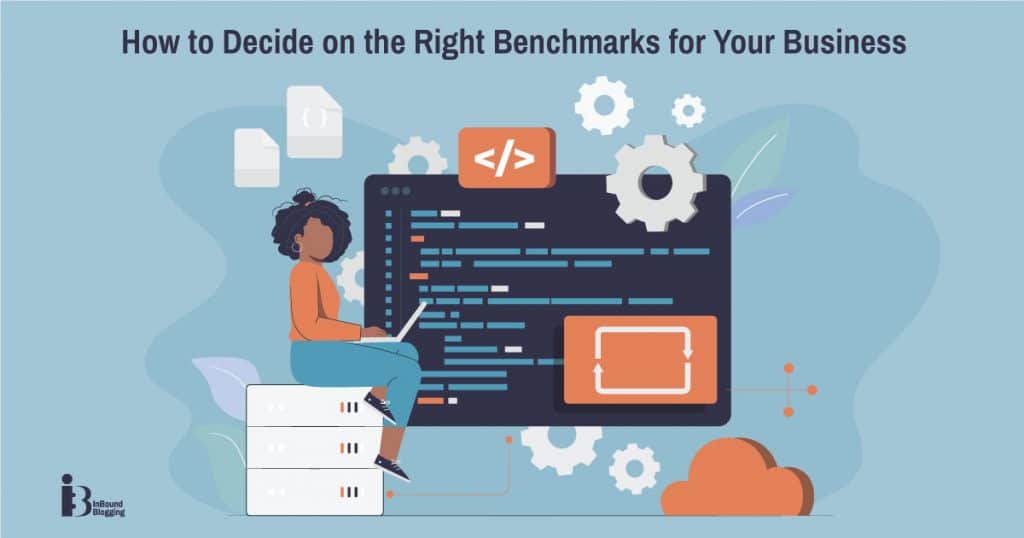
Understanding the right benchmarks for your business is pivotal to assessing its performance and achieving success. Evaluating factors such as your company’s size, business model, annual contract value, market strategy, and product type can help determine relevant benchmarks.
Size and stage of the company
The size and stage of a SaaS company play an integral role in setting relevant benchmarks. A startup in its early days will have different benchmarks compared to well-established companies.
- Early-stage startups: Prioritize measurements such as customer acquisition and churn rate, Their success is mostly determined by your ability to attract new customers and prevent existing ones from leaving.
- Growth/mid-level companies: The focus shifts toward growth metrics, such as revenue growth, capital efficiency metrics, and financial performance indicators.
- Large/mature organizations: Concentrate more on operational efficiency metrics to streamline processes for scalability while maintaining strong bottom-line numbers.
Type of company and business model
As mentioned earlier, the type of company and business model are significant determinants in setting realistic SaaS benchmarks. Depending on the nature of operations, it’s either a B2B (business-to-business) or a B2C (business-to-customer) company.
An enterprise SaaS caters to larger businesses; hence, its benchmarks would differ from those of SMB-focused SaaS providers. The annual contract value (ACV) is higher for enterprise-level companies as opposed to the lower ACV of SMB-focused companies.
In terms of business models, some common ones include:
- Subscription-based
- Freemium
- Transaction-based
Comparing metrics across different business models could yield incorrect insights. For instance, a subscription-based model might have a higher customer lifetime value (CLTV) but may struggle with user acquisition when compared to freemium models.
Therefore, understanding the type of company and the SaaS business model is essential in defining success achievement criteria, and considering one’s specificities during benchmark analysis.
Average annual contract value
Average annual contract value (ACV) represents the average yearly revenue allocation per customer contract, helping businesses establish realistic goals and inform strategic decisions.
It’s typically calculated by dividing the total contract value by the number of years in that contract.
Key components impacting ACV include:
- Product type and service distribution model: Higher-value products or top-tier service levels will influence an increase in ACV.
- Business priorities: If a company’s go-to-market strategy emphasizes long-term contracts with more extensive features, it will likely see a higher ACV.
- Company size and stage: Mature SaaS companies often boast higher ACVs as they have had more time to grow their product and customer base.
Understanding your average annual contract value is essential for strategic planning, setting realistic sales targets, evaluating operational efficiency, and assessing financial performance.
Target customer and go-to-market strategy
Target customers are the core of your business success, determining the direction of your product type, service distribution model, and overall business model. This understanding allows you to tailor your marketing, sales efforts, and offerings according to their specific needs and preferences.
To properly strategize your go-to-market efforts aimed at achieving your SaaS benchmarks, a clear customer profile should be formulated through thorough market research:
- Demographics: Age, location, income levels, etc.
- Psychographics: Interests, values, etc.
- Behavioral trends: Purchasing habits, preferences, etc.
On that basis, you develop a go-to-market (GTM) strategy. The GTM is critical for operations alignment as well as for converting leads into actual customers. Key components include:
- An effective brand positioning
- Offers tailored for customers
- Channel strategy
- KPIs to evaluate relative success
Knowing who exactly makes up your target market per segment, coupled with an impactful GTM strategy, improves the chances of stellar performance in terms of desired SaaS benchmarks.
Remember to define your target audience, as it forms the foundation upon which all other strategies are built. This allows successful businesses to efficiently connect with potential clients.
Product/service type and distribution model
The product/service type and distribution model are crucial benchmarks in a SaaS business. Understanding these helps you strategize your market position effectively.
A SaaS business can offer various product types, such as:
- Operational efficiency tools: These improve the workflow within an organization.
- Financial performance systems: They control and analyze a company’s financial activities.
Then comes the distribution model. A clear understanding of this is required for any successful go-to-market strategy and to manage customer acquisition metrics efficiently. It can be broadly divided into two parts:
- Direct sales: Involves direct interaction with potential clients through sales teams.
- Channel sales: Partnerships via intermediaries to resell your software service.
It’s important to benchmark, monitor, and track how each type fares in terms of revenue growth, churn rate reduction, lead generation, etc., forming key actionable insights within your business intelligence platform. Choose wisely based on your business model and priorities.
Strategies for Benchmark Improvement
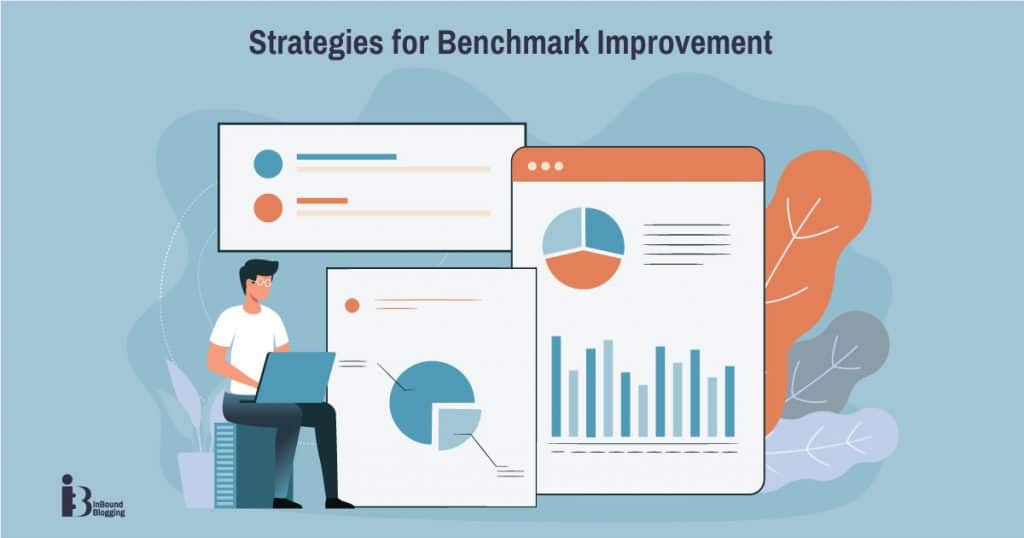
Performance measurement and realistic goals are vital for SaaS benchmark improvement. Through strategies such as enhancing lead generation, churn reduction, and operational efficiency metrics, businesses can attain tangible growth. Effective tactics include utilizing analytics tools and proactive go-to-market strategies.
Customer acquisition optimization
In an optimal SaaS business model, focusing on customer acquisition optimization is vital. One of the primary strategies to implement comprises effective marketing and advertising. Employing data-driven campaigns, targeted advertisements, and SEO techniques can significantly boost your SaaS product’s online visibility.
Another strategy to optimize customer acquisition is mastering conversion rate optimization (CRO) techniques. These include user experience enhancement, website performance optimization, A/B testing, and compelling calls-to-action (CTAs).
- User experience enhancement: Improve overall site design and navigation for a better user journey.
- Website performance optimization: Increase load speed for better user interaction.
- A/B testing: Run split tests to see what landing page versions perform best.
- Compelling CTAs: Craft persuasive calls-to-action that encourage conversion.
Lastly, improving your game in terms of lead generation is a must. You should continuously strive to indulge prospective customers with valuable content pertaining to their interests. Concurrently, nurturing those leads with tailored follow-ups and emails helps maintain their interest levels.
Ensuring an immaculate blend of these elements will contribute extraordinarily toward achieving success in your SaaS company’s customer acquisition endeavors.
Retention and user engagement strategies
Maintaining a strong customer base in the SaaS landscape centers around effective retention and user engagement strategies. Here is what you should strive to achieve:
Reduce churn through proactive measures
Churn, or loss of customers, can significantly impact your SaaS business’s bottom line. Implement targeted measures that can address customer concerns ahead of time, such as offering personalized product support and leveraging user data to predict potential issues before they become serious problems. Establish a loyal customer base by creating an open dialogue with your audience.
“In the SaaS sector, the churn rate is the ghost at the party, frequently indicating underlying problems before they show up on the balance sheet. This indicator, which displays the monthly percentage of customers who leave, serves as a yardstick for measuring customer happiness.
Making it somewhat more difficult for consumers to cancel subscriptions or using customer feedback loops to address the fundamental causes of churn are just a couple of strategies that can considerably tip the scales. Additionally, enticing users to renew their subscriptions by providing loyalty awards or premium features might keep them using the service. A careful approach to churn rate management not only stops the leaky bucket but also steers a SaaS company toward a future of reliable recurring revenue.” Jack Carrere, Co-Founder and CEO, Prokeep
Enhance user onboarding and activation
This means creating an intuitive process from the moment a user signs up for your service to when they begin using it effectively. Simplify complicated procedures into manageable steps, provide helpful tutorials, and always be ready to assist. A great start will set users on the path toward becoming long-term customers.
Improve user experience and satisfaction
You can achieve this by understanding their needs through comprehensive analysis derived from various data points, such as feedback or usage patterns, which then form the basis for feature enhancement and bug-fix prioritization.
Let these retention strategies be guided by continued performance measurement and realistic goal setting—key aspects of launching a successful operation in today’s rapidly changing SaaS world.
Remember that engaging with users goes beyond just providing them with excellent products or services—it’s about building meaningful relationships based on understanding client needs while consistently delivering value.
“At SocialPilot, we’ve found that customer acquisition cost (CAC) and customer lifetime value (CLV) are pivotal. Keeping a low CAC while increasing CLV ensures a sustainable business model. Additionally, churn rate and net promoter score (NPS) provide insights into customer satisfaction and loyalty.
To improve in these areas, prioritize customer success through proactive support and onboarding. Regularly review and enhance your product based on user feedback, and invest in content marketing to establish thought leadership and attract organic traffic.
Lastly, don’t overlook the importance of data-driven decision-making. Analyze user behavior and conversion funnels to continuously optimize your product and marketing strategies.” Suraj Nair, Senior Digital Marketer, SocialPilot
Revenue growth and pricing strategies
Different pricing strategies can be employed depending on your business priorities, product type, and customer acquisition metrics.
- Value-based pricing: Establish prices based on the perceived value of your service. It aligns your revenue with customers’ satisfaction levels, ensuring a win-win situation.
- Tiered pricing: Offering multiple levels or “tiers” of service at different price points caters to a diverse clientele, each with varying budgets and needs.
What is more, creating opportunities for upselling and cross-selling within your existing customer base can significantly boost revenue. Additionally, looking into expansion opportunities that cater to specific market areas not covered by your current services can lead to more financial performance breakthroughs.
- Upselling: Encourage customers to purchase higher-tier packages or premium features.
- Cross-selling: Pair and sell complementary services together for added value.
- Expansion opportunities: Identify gaps in the market where you could potentially offer new products or improve existing ones.
The optimization of these strategies is often an iterative process. Constant benchmarking and data analytics utilization will assist you in meeting both business targets as well as performing well on the customer happiness matrix, effectively contributing toward impressive revenue growth.
“We’ve found that retaining existing fitness-business clients is more cost-effective than acquiring new ones. Therefore, we’ve invested in providing exceptional client service and regularly updating our product based on client feedback. We also offer incentives for long-term commitments, such as discounted pricing for annual subscriptions.” Laia Quintana, Head of Marketing and Sales, TeamUp
Operational efficiency and cost reduction
Operational efficiency and cost reduction are pivotal metrics when considering SaaS benchmarks.
To boost operational efficiency, businesses should streamline their processes and workflows. A top-notch example is leveraging automation and technology solutions to expedite manual tasks or complex undertakings. This not only enhances efficiency but also frees up valuable resources for more strategic assignments.
Next comes the crucial aspect of cost reduction, which directly affects a company’s overall financial health. Identifying expenses that do not add value to the organization is a paramount step. These might be unnecessary instantiated utilities in a cloud environment or redundant customer acquisition avenues that can be minimized to significantly reduce costs.
It’s essential to keep the balance intact between operational efficiency improvements and cost reductions, as both play an integral part in shaping the path to achieving success for any business model. The ultimate goal should be to reach higher operational efficiency with the lowest possible costs without compromising on quality or customer retention metrics.
Notably, the proper application of these strategies can contribute positively toward lead generation, churn reduction, revenue growth, and pricing strategies within any SaaS platform.
SaaS Business Benchmarking Challenges
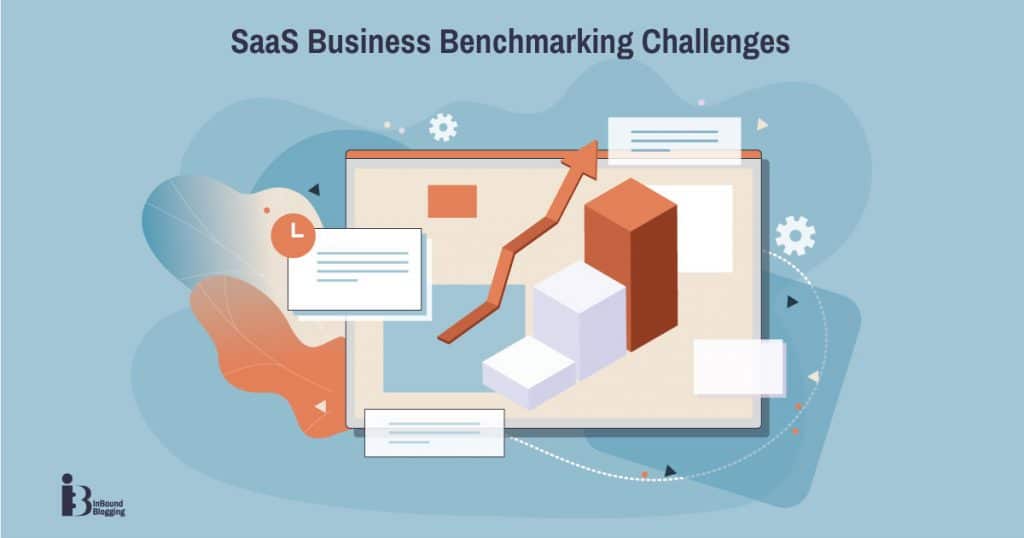
SaaS business benchmarking challenges pose a hurdle to achieving operational efficiency, cost reductions, and ideal customer acquisition metrics. Ensuring accurate data gathering and overcoming challenges requires effective tools and strategies.
Benchmarking against companies that are too different from yours
It’s a common pitfall to benchmark against companies that are too different from yours. This involves factors such as business model, product type, and your company’s unique go-to-market strategy.
Making comparisons with vastly dissimilar entities can lead to skewed perceptions of your performance and result in unrealistic goals. It’s imperative to choose comparative companies aligned closely with your business’s structure and stage of growth to gain valuable insights effectively.
Measuring too many metrics or the wrong metrics
In SaaS businesses, measuring too many metrics or focusing on the wrong ones can lead to inefficiency. When it comes to benchmarks, less is more. Companies should not be swayed by vanity metrics that offer little value in actual performance measurement. These may include things such as page views or social media followers.
Instead, key metrics for a SaaS business are typically centered around user engagement, churn rate, customer acquisition cost, lifetime value, and revenue growth. It’s essential to focus on metrics relevant to your company’s stage of growth and its strategy.
“Customer acquisition cost is the way to go. I find that most marketing agencies focus too much on MQLs, which really can be anything (ebook downloads, webinar signups), but they’re not always qualified and guaranteed to convert. Your sales team might even have a 1% success rate with those MQLs.
If you want to focus on metrics that matter, focus on CAC. It’s the metric that gauges whether those leads converted and how much it cost to convert that client. You’ll also want to factor in your customer lifetime value to find the actual value of that lead. MQLs and traffic are mostly vanity metrics, while CAC focuses on actual revenue.” Taylor Scher, SEO Consultant, TaylorScherSEO
Looking at metrics in isolation
Looking at metrics in isolation can lead to incomplete business insights. For instance, focusing on high lead generation without considering the corresponding churn rate gives only half the story. A high churn could negate the gains from lead conversion. It’s crucial to measure metrics such as customer acquisition metrics, retention metrics, and operational efficiency metrics together for a holistic view of your SaaS business’s health.
| Metrics that should not be viewed in isolation | |
| 1 | Lead generation |
| 2 | Churn rate |
| 3 | Customer acquisition metrics |
| 4 | Retention metrics |
| 5 | Operational efficiency metrics |
| 6 | Revenue metrics |
Always consider these in relation to each other and not as independent entities.
“Based on my experience, key performance metrics are the notes that compose the SaaS symphony of success. Customer acquisition cost, churn rate, and monthly recurring revenue are the virtuoso indicators, each playing a vital role.
By conducting a harmonious analysis and leveraging data-driven strategies, businesses can fine-tune their performance. It’s not just about hitting the right metrics; it’s about orchestrating a strategy that ensures sustained growth and customer satisfaction, creating a melody of prosperity in the SaaS landscape.” José Moya, Outreach Manager, Wearecapicua.com
Calculating metrics incorrectly
Benchmarking provides SaaS businesses with critical insights into their performance. However, one common challenge lies in the incorrect calculation of metrics. This usually stems from a lack of understanding about what data to track and how to measure it effectively. Ensuring accurate calculations is paramount to valuable performance measurements.
| Common mistakes | Solution |
| Misleading average metrics | Use segmented reporting instead |
| Wrong implementation of tracking parameters | Double-check your tracking tool’s setup |
| Ignored operational efficiency metrics | Measure both capital and operational efficiencies |
These inaccuracies can misdirect strategic decision-making, leading to wasted lead-generation efforts and unsuccessful churn-reduction strategies.
Choosing metrics based exclusively on external expectations
Choosing metrics solely based on external expectations can misguide your SaaS business strategies. SaaS benchmarks should account for internal operational efficiency, the business model, and product type, besides comparing them with industry standards.
Blindly adhering to external benchmarks might lead to ineffective lead generation, growing churn, and compromised user onboarding efforts. Always balance internal priorities while choosing your performance measurement metrics.
Not gathering data efficiently or regularly enough
This can significantly hinder your SaaS company’s ability to set realistic goals and measure performance. It’s essential for determining the effectiveness of your go-to-market strategy, assessing your product type’s success, and understanding your service distribution model.
Regular data gathering also aids in identifying opportunities for cost reduction and enhancing operational efficiency. The inability to analyze key metrics such as customer acquisition and retention impedes capital efficiency. Hence, efficient data collection is vital for successful benchmarking and revenue growth.
Reporting on data ineffectively
Ineffective data reporting can stall the growth of your SaaS business. The pitfalls often include not tracking the right SaaS benchmarks, incomprehensible data analytics, low operational efficiency due to poor use of tools such as Google Analytics, and disjointed custom dashboards.
A typical scenario:
| Validates benchmarks ineffectively | Doesn’t focus on important metrics (lead generation, churn reduction). |
| Inefficient use of tools | Fails to utilize Google Analytics or other SaaS-specific analytics platforms effectively. |
| Poor reporting | Generates unclear or irrelevant reports that don’t facilitate strategic decision-making. |
An effective reporting process is integral to growing revenue, improving user onboarding, optimizing pricing strategies, and maintaining cost efficiency.
Tools for Tracking and Analyzing SaaS Benchmarks
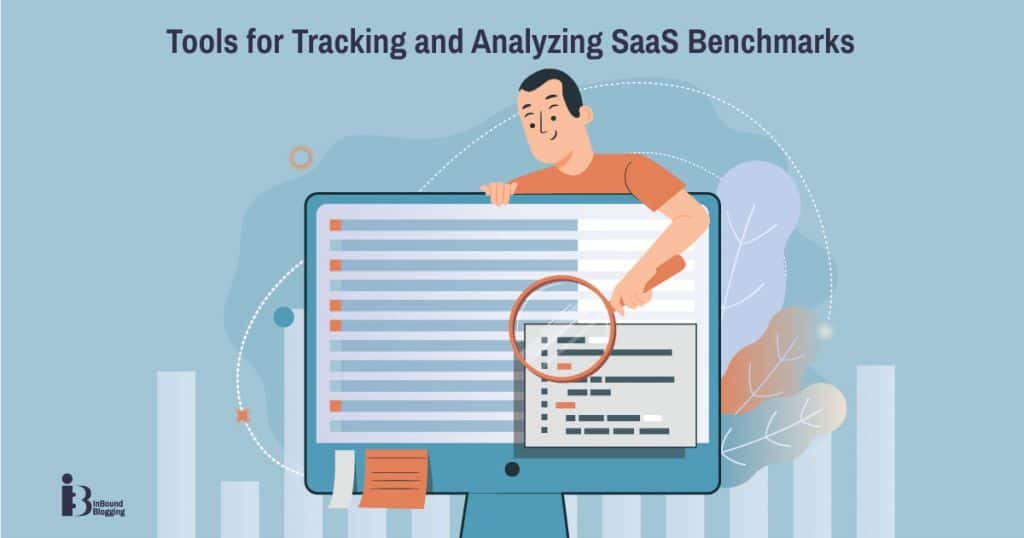
In SaaS benchmarks, efficient tracking and analyzing tools play an invaluable role. They help aid in aligning with business priorities, defining realistic goals, achieving success, and staying ahead of the curve. These tools include Google Analytics, SaaS-specific analytics platforms, and customizable dashboards for measuring key performance metrics.
Essential analytics and reporting tools
To track and understand the performance of your SaaS business, leveraging powerful analytics and reporting tools is crucial. With such tools, Google Analytics sits at the forefront. This platform provides detailed insights into customer acquisition metrics and user onboarding processes in real time and helps create realistic goals.
However, a more tailored approach is facilitated by SaaS-specific analytics platforms such as Baremetrics or ChartMogul. These platforms are specially built to handle unique SaaS traits such as churn reduction, annual contract value, etc. They provide granular data about each important aspect of your SaaS operations, going beyond mere website analysis.
Additionally, for easier visualization and decision-making based on multiple reports, consider customized dashboard creation for tracking key metrics such as financial performance or operational efficiency metrics. Tailoring dashboards according to business priorities acts as a vital asset in refining your strategies for revenue growth and cost reduction.
Business intelligence platforms for deeper insights
Business intelligence platforms, or BI platforms, are powerful tools that facilitate deep dives into your SaaS benchmarks. Some great examples include Tableau and Microsoft Power BI. By leveraging data analytics, you gain actionable insights crucial for optimizing performance and setting realistic goals.
BI platforms also use predictive analytics, enabling you to forecast future trends and make strategic decisions accordingly. Plus, these platforms often allow for the creation of a customized dashboard aiming to track all relevant metrics, from customer acquisition to retention and financial performance, giving a 360-degree insight into operational efficiency.
In essence, harnessing the capabilities of BI platforms gives you the power to turn raw data into measurable progress toward business priorities.
Conclusion
SaaS benchmarks, an essential performance measurement tool, significantly contribute to a business’s success. Recalling our key takeaways, it’s vital to regularly update your internal and external benchmarks and ensure they are in sync with your business priorities.
Remember that benchmarking is a continuous process adapted according to company size, stage, and annual contract value. Don’t hesitate to leverage analytical tools such as Google Analytics or customized dashboards for tracking metrics such as customer acquisition and retention metrics.
Implement the learned strategies wholeheartedly—optimize your SaaS business for lasting success!



